The Best Self-Emptying Robot Vacuums That Save You Time and Effort
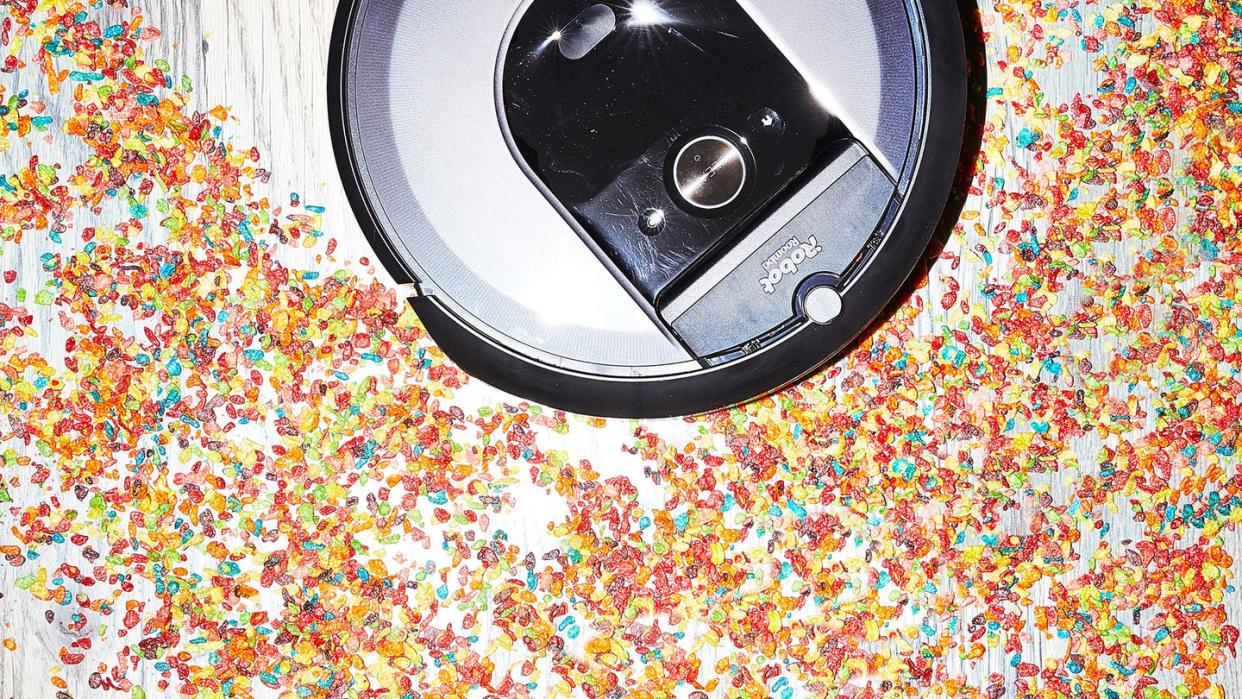
"Hearst Magazines and Yahoo may earn commission or revenue on some items through these links."
Only a select few regular household chores are more tedious and time consuming than cleaning floors. According to a number of recent surveys, scrubbing and sanitizing bathrooms is the most hated task, followed by hand-washing dishes/unloading the dishwasher, cleaning the stove/oven, laundry/ironing, and then mopping and vacuuming. The pure drudgery of mopping and vacuuming is the prime reason why robots that do one or both have become so popular.
The growing popularity of robot vacs and mops have led manufacturers to create a wide spectrum of features and options. Most fascinating of all is the breed of self-emptying robot vacuums and mops, which automatically refill themselves with water and/or cleaning liquid, or even clean their own mop heads.
Here's the problem: The more chores robot vacuums and mops perform, the more complicated they’ve become. The more complicated they are, the more you need to know to be sure you choose the right model to suit your floor cleaning and time management needs.
The Best Self-Emptying Robot Vacuum Cleaners
Best Overall: Roomba Combo j9+
Most Powerful Cleaning Solution: Ecovacs Deebot X2 Omni
Best Value Vacuum/Mop Combo: Roomba Combo i5+
Most Space-Efficient: SwitchBot Mini K10+
Best Bagless Self-Emptying Vacuum: Shark RV2310AE Matrix
The Expert: I've been writing about, reporting on, and reviewing consumer technology for nearly 40 years, and specifically stick and robot vacs since their appearance.
What to Know About Self-Emptying Robot Vacuums
Robot vacs and mops have only partially relieved us of our floor chores—and here’s why: Their tiny dustbins and skimpy water reservoirs, respectively, require emptying after almost every cleaning job. It's not as laborious as vacuuming or mopping, but an added step, nonetheless.
The fix for the tiny robot vac dustbin issue was introduced in 2018 when the first "self-emptying" robot vacuums appeared. When its dustbin is full, a robot vac automatically returns to and connects to its charging base. Its accumulated refuse is sucked out in a loud "whoosh" into a foot-high base canister containing a disposable paper vacuum bag. After emptying itself, the robot vac goes back to its pre-programmed cleaning route.
Once the vacuum fills the canister bag, you’ll need to manually swap it out for an empty one, of course. Depending on the capacity of the canister's bag, how frequently you clean, and how dirty your floors get, you will only need to do that once every few weeks or more.
Keep in mind that while there are varying self-emptying robot vacuum models, they are similar in their logistics, configuration and features, and operation.
Physically, circular robot vacs usually measure a bit more than a foot wide, stand around 3.5 to 4 inches high, and are equipped with three wheels, top- and/or front-mounted sensors or cameras, brush rollers, a spinning corner brush, and a small removable dustbin. A robot vac's height determines which types of furniture if can squeeze under to clean beneath, such as beds, sofas, cabinets, and coffee tables.
Self-emptying robot vacs are typically rated in how many "days" or, more accurately, how many cleaning sessions-worth of dirt its canisters can store, usually between 30 to 60. However, the capacity of the canister dust bag, usually 2.5 to 3 liters, is a more accurate way to gauge the fill-time of a canister dust bag.
If a manufacturer claims its self-emptying robot vac can hold 60 days' worth of dust and dirt, and you vacuum, say, three times a week, you won't have to worry about emptying the canister for about six months. You'll be alerted by your vac's smartphone app when the canister bag is filled. A set of three new dust bags costs about $20 to $30.
You can ignore a robot vac's listed battery run time. Once the vac realizes its power is winding down, it will return to its base, recharge its batteries, then return to its pre-programmed cleaning session.
Features to Consider With Self-Emptying Robot Vacuums
Suction Power
There is no independent standard for measuring robot vacuum suction power, but most of the manufacturers list a suction spec called "Pa" (Pascal). The higher the Pa rating—usually between 2,000 Pa and 5,000 Pa—the greater the suction power. Most robot vacuum models also automatically adjust suction power depending on the surfaces they detect.
Try These, Too: Best Cordless Stick Vacuums • Best Handheld Vacuums • Best Vacuums for Hardwood Floors • Best Vacuums for Pet Hair
Voice Control
Most robot vacs are compatible with Amazon Alexa and/or Google Assistant, but it's usually faster and easier to control them via the robot vac's smartphone app. That way you don't need to memorize a precise and often longwinded set of voice control commands.
Mapping
All robot vacs perform initial, usually non-cleaning, runs around your home to create a map. Different models use different mapping methods such as a smart camera or LIDAR (Light Detection And Ranging), a kind of radar, to create either 2D or 3D maps. While each manufacturer touts the advantage of their mapping method and map type versus an another, all have their pros and cons, and none is definitively superior or inferior to another. The important thing to know is that all maps can be customized to identify different rooms and to specify areas to be cleaned or to avoid.
Scheduling
Once maps are created, all cleaning, either your whole home or specific rooms, can be scheduled using the vac's smartphone app, completely automating your floor cleaning with little, if any human interference, except to avoid it or kick the cat off of it while it's making the rounds.
Object Avoidance
If your floor is often littered with small toys, stray pieces of laundry, charging cables, or electrical wires, most robot vacs can “see” or otherwise detect these smaller objects and learn to avoid them. Keep in mind that some robot vac models avoid objects only above a particular height so they can transverse room dividers or thresholds.
Mop or No Mop
In the last year or so, self-emptying vacs with solid surface wet mopping capabilities have become available. A mopping-capable robot vac is equipped with a clip-on mop attachment that includes a small reservoir that you fill with water and a series of washable or disposable mopping pads.
All vac/mop combos claim their sensors can differentiate between uncovered or covered floors, but many models will first clean one type of floor then the other, or require you to remove the mopping attachment before vacuuming to assure your carpets or rugs won't be accidentally ruined.
Hair
All robot vacs are equipped with brush rollers of some type as well as removable spinning corner brushes that access hard-to-reach spots, both of which can become entwined with hair, both human and pet. Some vacs make it easier to remove accumulated or wound-up hair than others; if someone in your home has longer hair or you have a shedding pet, you may need to drill further down in the information or user reviews for specific models to determine the difficulty or ease of hair removal.
Cost
Many self-emptying robot vacuums are priced between $300 to $800, and many self-emptying vacuum/mopping combos run between $500 to $1,500. Since many self-emptying robot vacs provide similar features and functions, price differentials between varying models often are based more on "soft" considerations like brand reputation and experience, build quality, app ease-of-use, and customer service. For instance, models from iRobot, which invented the robot vacuum category 20 years ago, are among the priciest simply because the company has far more experience producing and innovating the product. Plus, unlike other robot vacuum vendors who make a wide variety of other products, iRobot still specializes in robot vacuums. As a result, both we and the industry consider Roomba models the measuring stick against which all other robot vacuums are measured, and whose premium prices are easily justified.
How We Evaluated Self-Emptying Robot Vacuums
For this roundup, we included only robot vacs with self-emptying capabilities from what we consider reputable brands, both with or without wet mopping capabilities. We also hands-on tested a limited number of models. Here are our picks for the best rechargeable self-emptying robot vacuums.
Roomba Combo j9+
Aside from its well-documented performance smarts and reliability, this latest flagship Roomba includes an auto-fill capability for its mopping function. The j9+ automatically empties debris and refills the robot’s reservoir with liquid for 30 days of autonomous mopping.
Best of all, the j9+’s mop head lifts up and back onto the Roomba to keep dirty mop water from accidently dripping onto your carpet or rugs. The j9+’s camera can intelligently identify and avoid hazards such as shoes, socks, cords, headphones, pet water bowls, and solid pet waste.
In fact, iRobot’s new P.O.O.P. (Pet Owner's Official Promise) guarantees a unit replacement if the j9+ ever accidentally sweeps over your pet’s messes. This model also features what is billed as a first-of-its-kind Dirt Detective Intelligence feature to automatically mop the bathroom last.
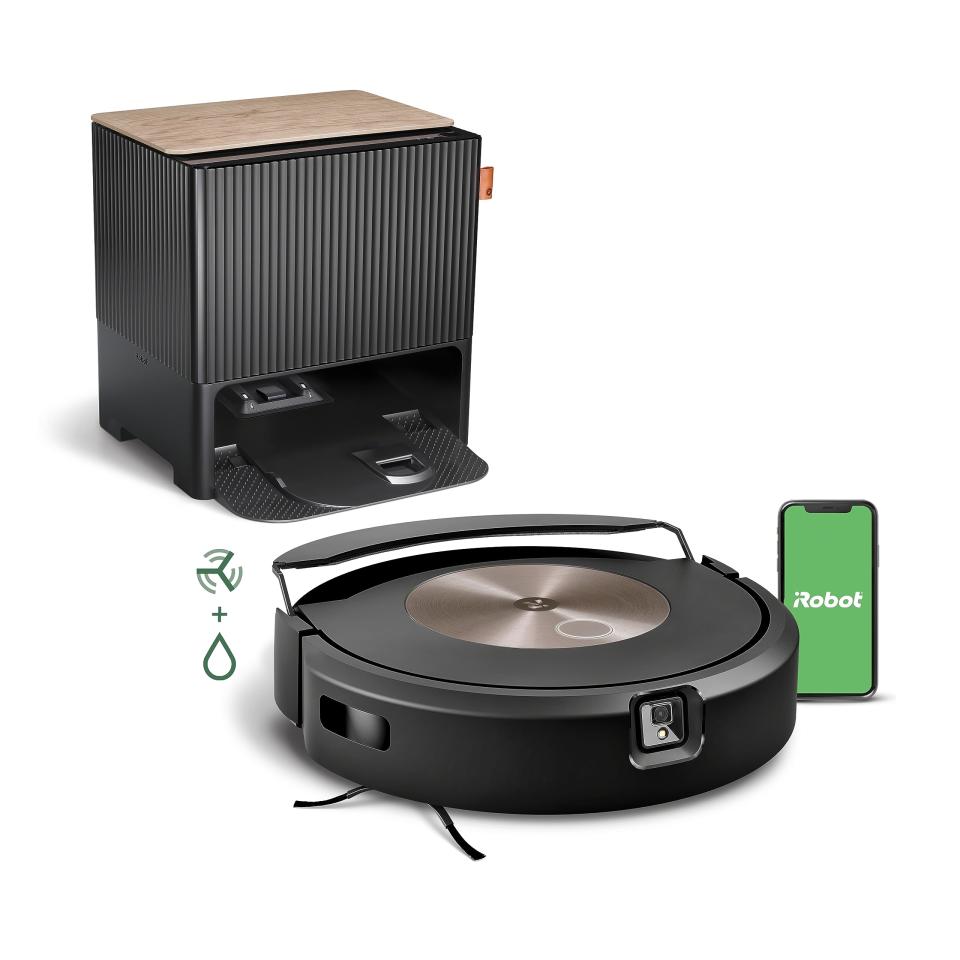
Roomba Combo j9+
amazon.com
$999.00
Deebot X2 Omni
Many vac/mop combos include static mop pads that wipe more than they scrub. Ecovacs has equipped its self-filling Deebot X2 Omni with twin chenille fabric mop heads that not only spin, to do more scrubbing, but are also enabled to get washed and cleaned up to 96 percent in 140-degree hot water.
With its self-filling reservoir, the X2 Omni can auto mop up to 4,300 square feet. Unfortunately, the X2 Omni’s wet mop heads lift up only.6 inches, which is not high enough to clear many higher-pile carpets or rugs.
Perhaps more importantly for keeping your carpets and rugs spotless, the X2 Omni is equipped with an 8000 Pa vacuum, offering one of the most powerful suctions available on a robot vacuum.
You’ll also notice the X2 Omni is more square than circular which means it cleans more efficiently along walls and corners but does sometimes have trouble turning in tight spots.
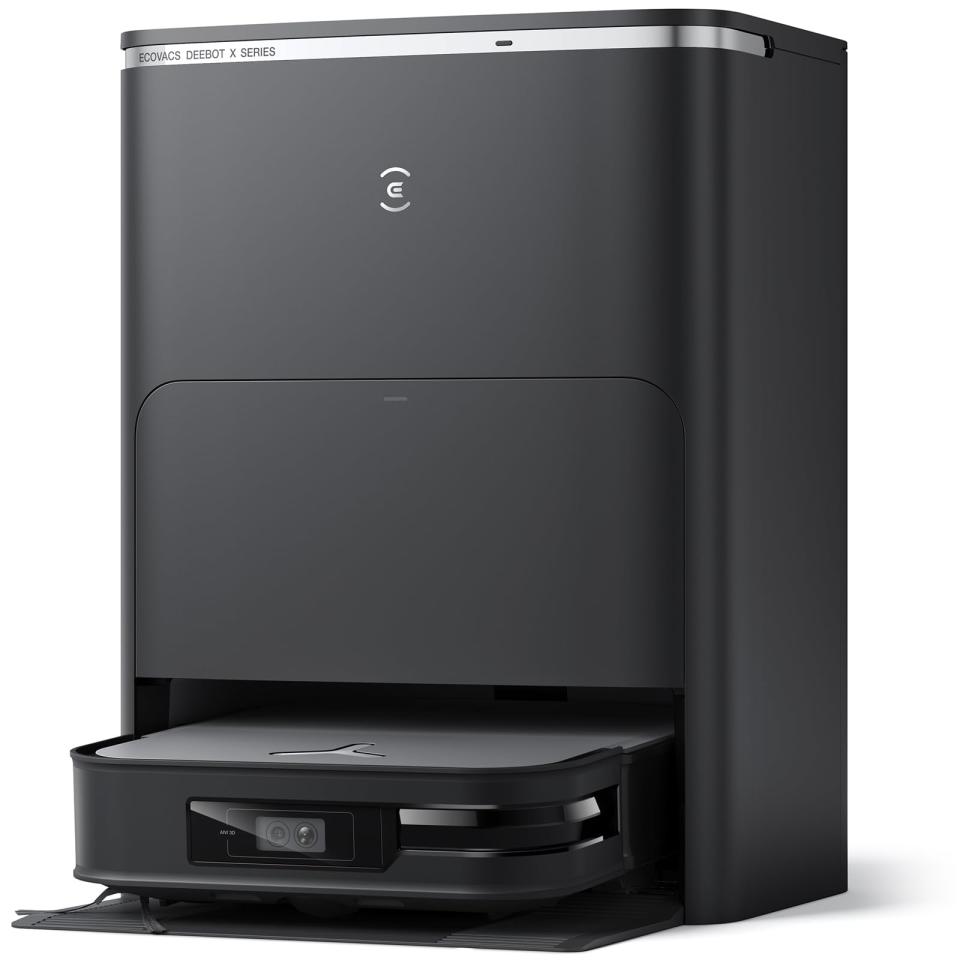
Deebot X2 Omni
amazon.com
$1044.99
Roomba Combo i5+
Yes, you can find cheaper vac/mop combinations, but the Roomba i5+ gives you incredible performance, object avoidance, and row-by-row room mapping smarts for a spectacularly low price.
Designed primarily for abodes with largely bare floors, this vacuum has two separate debris bins; one for general vacuuming, and one designed for bare floor vacuuming and mopping with separate dry debris and water/cleaning solution reservoir sections.
While the i5+ offers only half the suction of Roomba’s j-series models, including our top pick, it’s still more powerful than most of its budget-friendly competition. The i5+ also is smart enough to know what types of floors it is cleaning and how to avoid pet hair tangles.
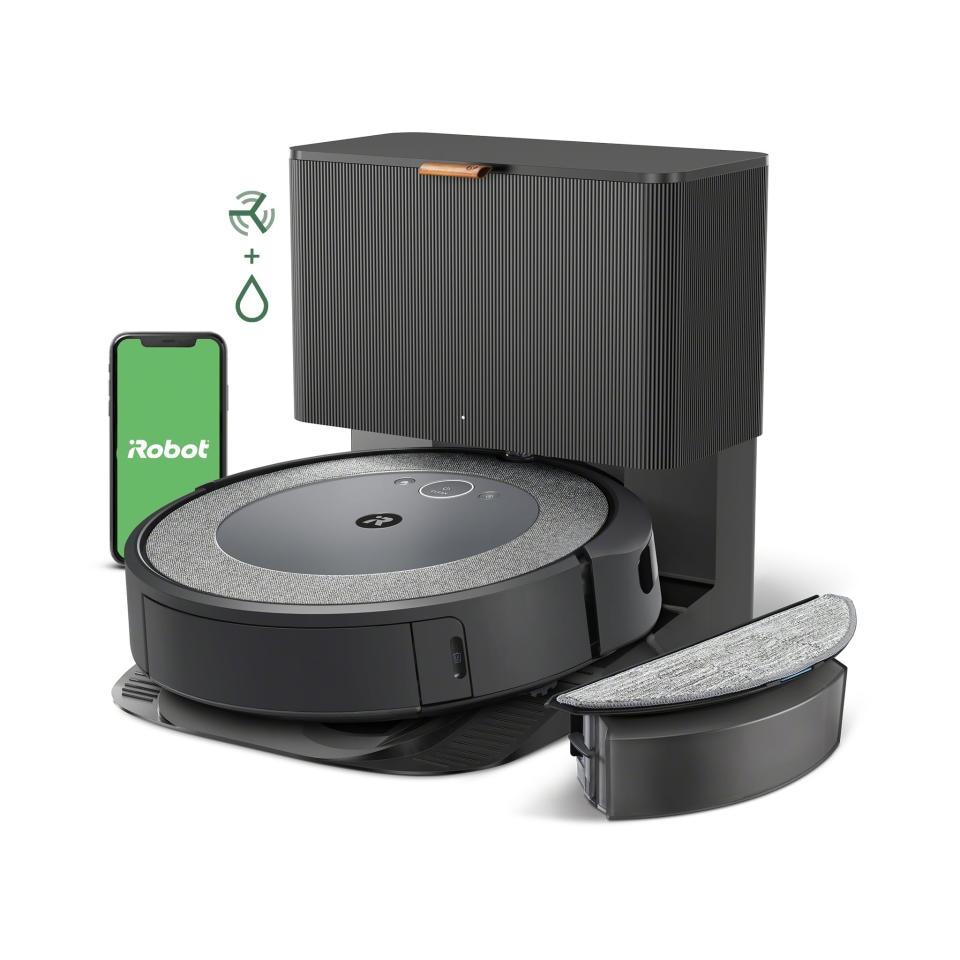
Roomba Combo i5+
amazon.com
$348.99
Mini K10+
Both the canister and the actual SwitchBot Mini K10+ robot are around a third smaller than the average self-emptying model. That means it takes up less floor space, and can squeeze beneath and around tightly packed furnishings to reach smaller spaces. In addition, the K10+’s quiet brushless motor emits 30 percent less noise than its larger competitors.
Of course, there are tradeoffs. The K10+ doesn’t include fancy object detection so you’ll have to clear the floor of potentially vacuum clogging items. Also, you get just 2500 Pa of suction, less half of the higher-priced vacuums featured here. You'll also have to attach the mop plate manually. Even then, the K10+ doesn’t do much more than wet wipe bare floors.
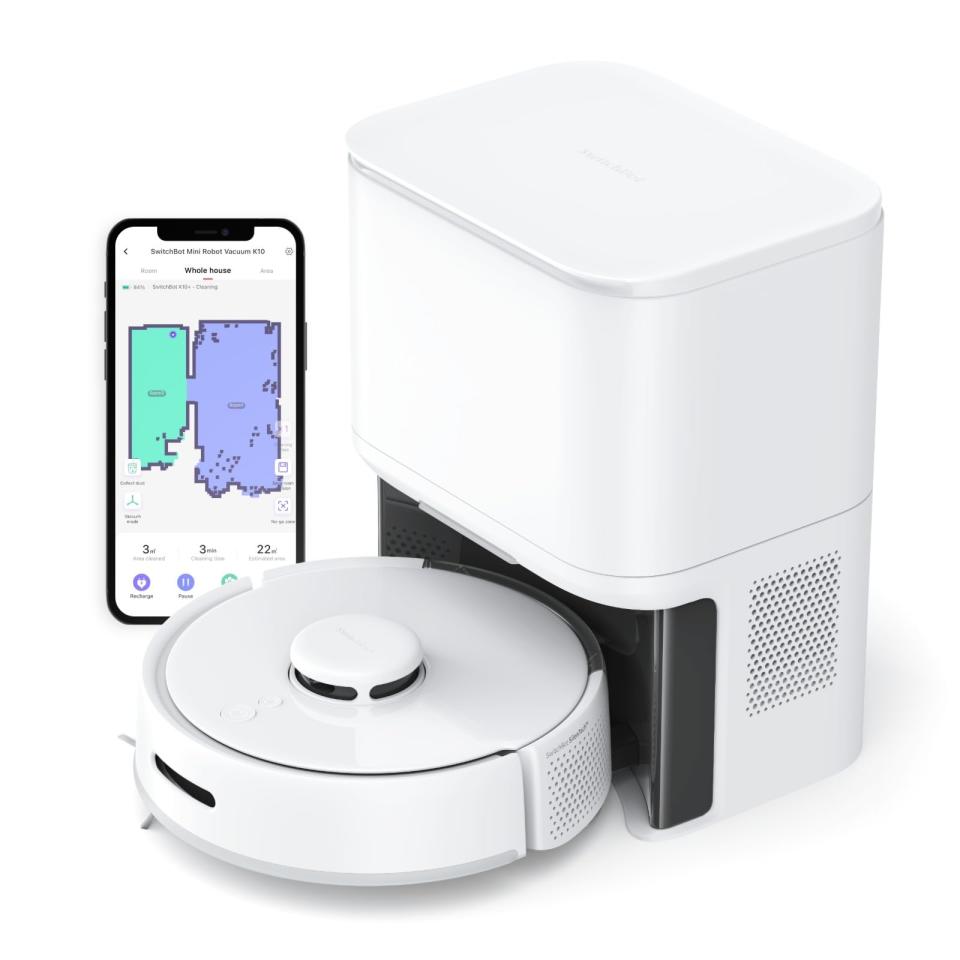
Mini K10+
amazon.com
$499.99
RV2310AE Matrix
While canister dustbin bags protect you from the dirt your robot vac sucks up, you incur an ongoing cost for replacement bags. This Shark RV2310 AE Matrix model uses a bagless canister instead, which can store up to 45 days of debris to save you the cost of replacement bags. The bagless downside: you could be exposed to 45 days of vacuumed dirt when emptying it.
Smarter thanks to its LIDAR mapping system, and more powerful compared to other Shark robot vacuums, this Matrix is equally effective at sucking up dirt off bare floors and low pile carpets and rugs.
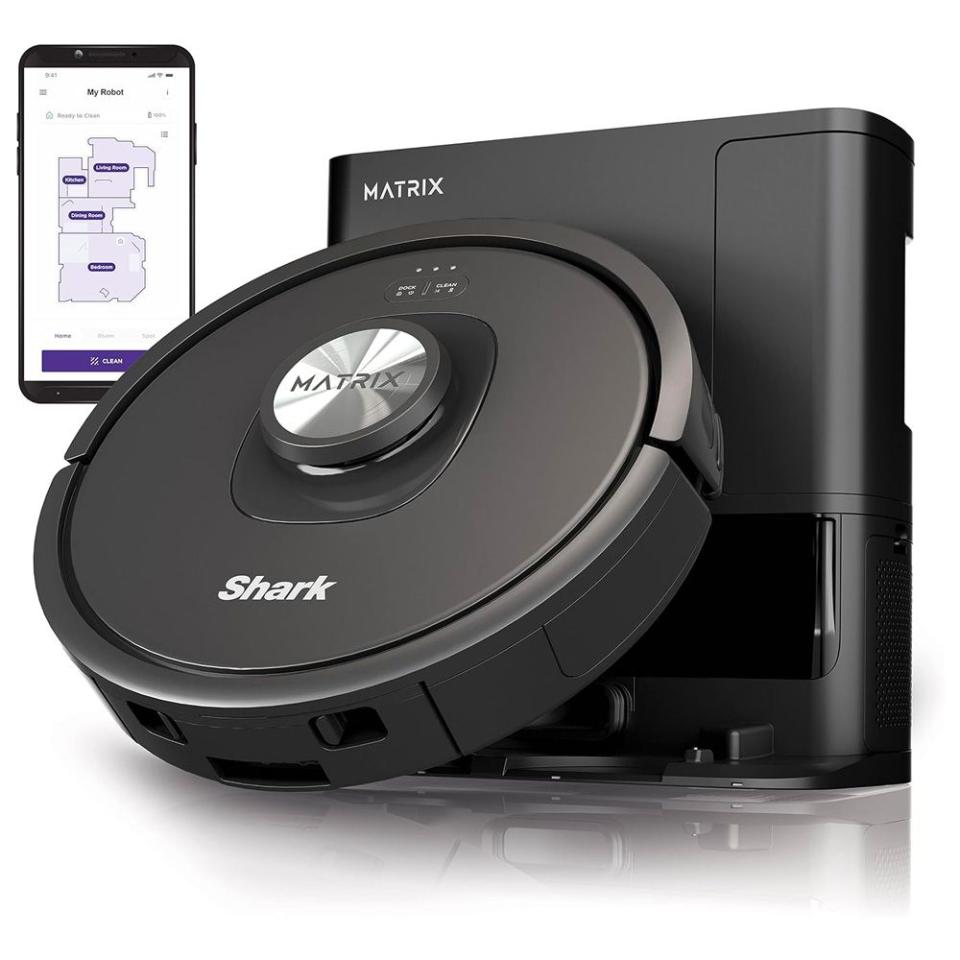
RV2310AE Matrix
amazon.com
$350.00
Expert Stewart Wolpin With All the Dirt on Robo Vacs—Learning Curve, Ease of Use, Reliability, and More!
How easy are robot vacuums to use?
Setting up and using a robot vacuum involves a bit of a learning curve, both for you and the vac. The vac needs to learn your home's layout, which may take a few runs, then you need to learn how to customize the map, set schedules, and otherwise navigate the app to understand and take advantage of a vac's varying features and options.
But once you and the vac are respectively educated, a self-emptying robot vac will prove far easier to use and maintain, and take up a lot less storage space, than any other kind of vacuum.
Is the suction on robot vacuums as powerful as other types of manual vacuums?
In our experience, no. But robot vacs can be scheduled to run as often as you like—once a week, once a day, even several times a day —without you lifting a finger.
Whatever the robot vac may miss during one run it'll likely pick up on subsequent runs. Plus, in our experience, robot vacuums clog far less frequently their more powerful manual counterparts.
Can robot vacuums clean any type of floor surface?
Robot vacuums can detect the type of surface it's cleaning and automatically adjust its vacuuming mode accordingly. However, obviously a robot vacuum can only essentially sweep a bare floor; you'll need a robot vac with wet mopping capabilities, or a separate robot mop, to actually wash and keep your bare floors spic and span.
Are robot vacuums reliable?
Robot vacs sometimes stall during their runs, either because they've encountered an identifiable object, playful pet or child, get trapped under a piece of furniture, or some other unpredictable reason.
All you need to do is pick up and clear the rollers or corner brush of any built-up dirt or hair or clog, and physically place the vac back in its charging base to reorient itself. It then resumes its cleaning session or recharge.
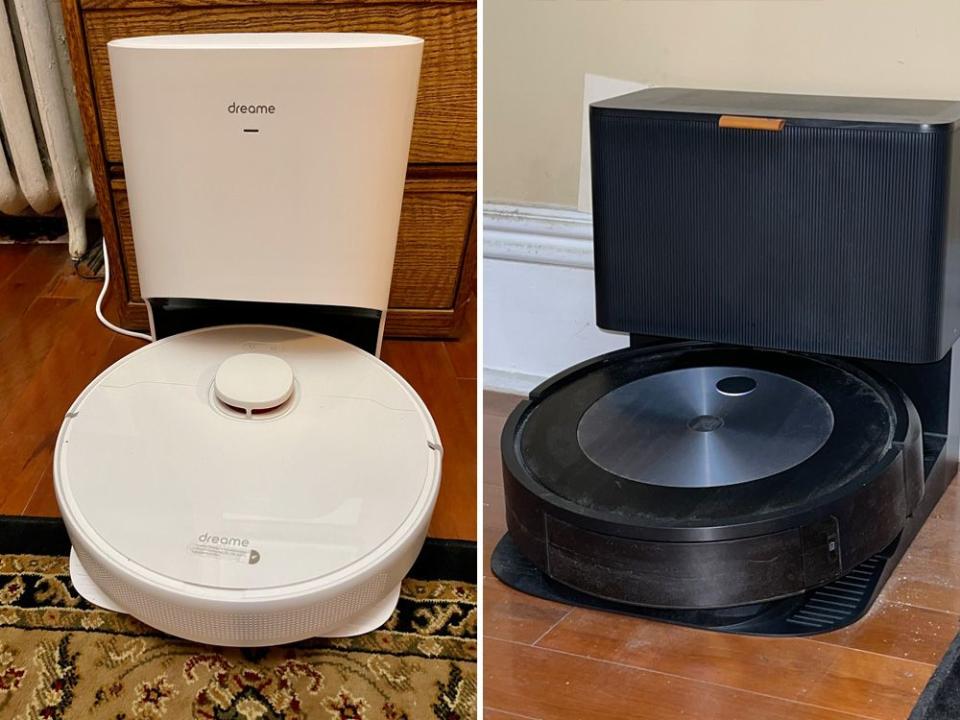
You Might Also Like

